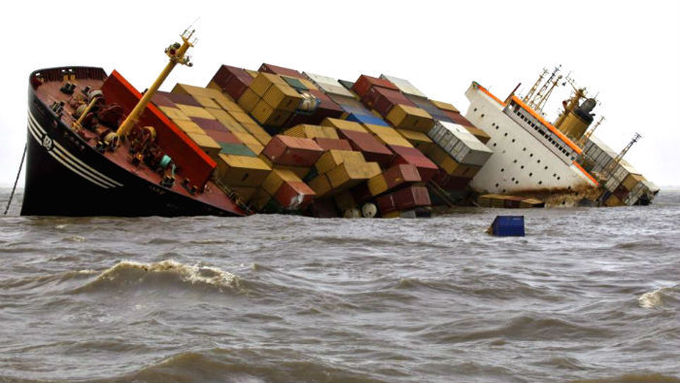It is known that there are about 90 typhoons(also called cyclones or hurricanes) every year all around the world. Among the climate experts’ divided opinions, one persistently strong view says global warming has not significantly increased the number of typhoons, which is slightly different from what we feel these days. We recently experienced strong typhoons more frequently than years before. Even though there has been very little change in number, it is obvious that they are getting more ferocious year by year.
Some studies show the power of the typhoons that hit East Asia, including Korea, China, and Japan has become more than 50 percent stronger than 40 years ago. According to a study done by researchers at the University of North Carolina, the maximum wind speed of typhoons to East Asia is 15 percent faster than 37 years ago due to global warming. However, the typhoons’ destructive power has increased by 50 percent, as they are now accompanied by heavy rain and wind.
This has become a challenge for ship operators and the shipping business as a whole. Yves Vandenborn, director of Loss Prevention at Standard P&I Club, says, “Tropical storms and typhoons are one of the key risks for the ship operations. Apart from the safety implications, there is an economic impact on shipping and ports caused by these natural events: ships have to be deviated, logistical supply chains come to a halt with ports shutting down, there could be delays in the aftermath as key infrastructure has to be repaired, back-log in port operations need to be cleared, etc.”

Especially this year, many ships have been being laid-up for months, and shipping companies are experiencing cash-flow challenges due to the pandemic, the typhoons were one more thing putting them into a corner. “In the event of worsening weather conditions, tug services for such cold laid-up ships may need to be used, which essentially implies additional costs.” Vandenborn says.
He explains the club has noted a steady rise in weather-related claims, with the majority of these relating to disputes arising out of damages or delays. For example, cases where ships have to deviate from their planned route to avoid or seek shelter from adverse weather conditions, this could lead to the late delivery of cargo and to potential losses to cargo receivers; Not only that: these circumstances may make it impossible for ships to load or discharge cargo at an agreed place as specified in the contract of carriage. There have been instances in which vessels have not been able to evade the impact of typhoons, leading to damages to the ship and cargo.
“As the wording of bills of lading, charterparties, and other contractual arrangements may vary, ship owners are recommended to engage with their P&I clubs and seek legal advice based on their contracts of carriage.” advised Vandenborn.
How can ship operators ensure navigational safety during the typhoon season? Monitoring weather forecasts is one of the main aspects of navigational safety. Yet, sometimes, large forecast spread makes it very difficult for ships to determine the most appropriate route. “Ship operators may choose to subscribe to weather routing services, but knowledge of warning signs (such as unusual wind direction, long period swell, overcast skies with cirrostratus cloud) help to better interpret the synoptic situation, especially if the ship does not have access to this type of information or is in close proximity to a developing storm.”

“A ship's passage plan should include considerations based on expected weather conditions, and contingency measures while maintaining safety, commercial and economic viability of the voyage. This is more crucial during the typhoon season as it is necessary to understand the development, structure, life cycle, and motion of tropical revolving storms right from the very beginning.” Vandenborn emphasizes the idea ship captains should know that storms have navigable and dangerous semi-circles, and bear in mind their tendency to recurve. Evasive measures such as speed reduction and route alterations are common to avoid encountering the typhoon, and a prudent navigator should use a combination of experience, skills, and all available sources of information.
We often see ship operators put their top priorities on reducing costs over ship’s safety, but we should know the greatest impediment in preventing accidents is to think there is no chance of accident. Also, to protect the safety of a ship, its cargo and the crew, the captain must grasp each coming situation accurately and quickly take measures to evacuate. It is necessary to act independently instead of waiting and following instructions from shore unconditionally.
“Early and effective action to keep away from the developing storm is necessary to avoid any adverse circumstances from occurring. Securing the vessel and planning for extreme weather conditions prior to the start of the voyage is part of prudent seamanship practices. In addition, the Mariner's Handbook includes descriptions of the evasive manoeuvre that mariners should be aware of.”
“There are unfortunate reports of a livestock carrier missing in the East China Sea with 42 crew and thousands of cattle, probably hit by high waves and strong winds caused by Typhoon Maysak. While the search for survivors continues, we should learn from this incident and prevent history from repeating itself,” told Vandenborn. The 14th typhoon, Cham-Hom, passed through southern Japan just a few days ago, and the southern part of the Korean Peninsula was also affected by strong winds and rain. This year's typhoon is not over yet, and stronger ones may come next year. That is why we need to study and get prepared.
------------------
미디어케이앤은 BVL(Bundesvereinigung Logistik : 독일연방물류협회)의 한국대표부로 양국간 물류비지니스의 가교역할을 하고 있습니다.

















